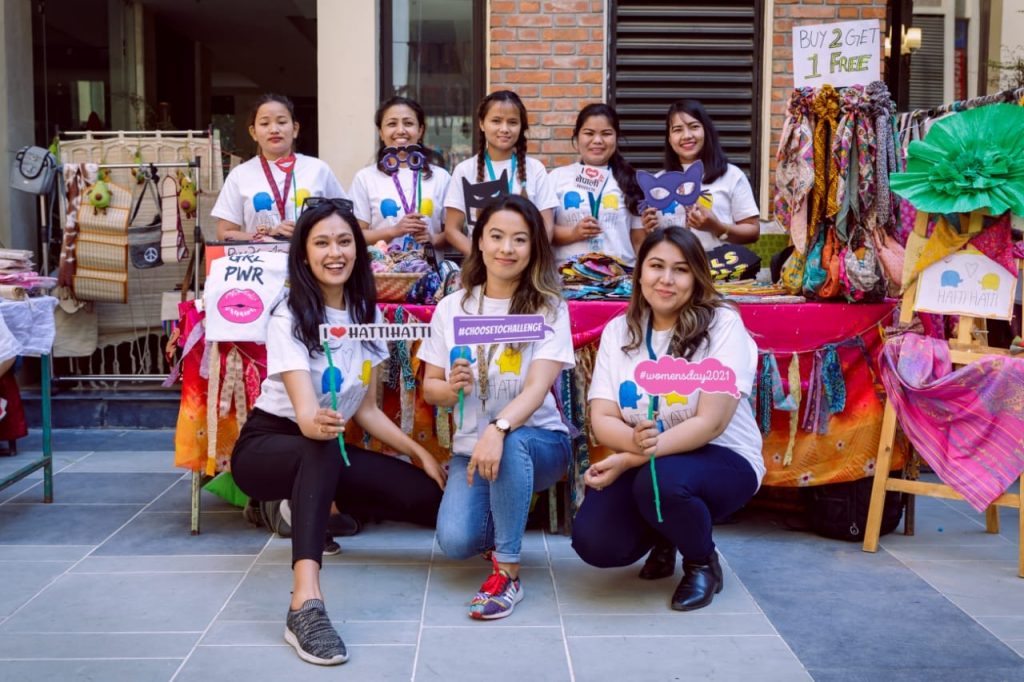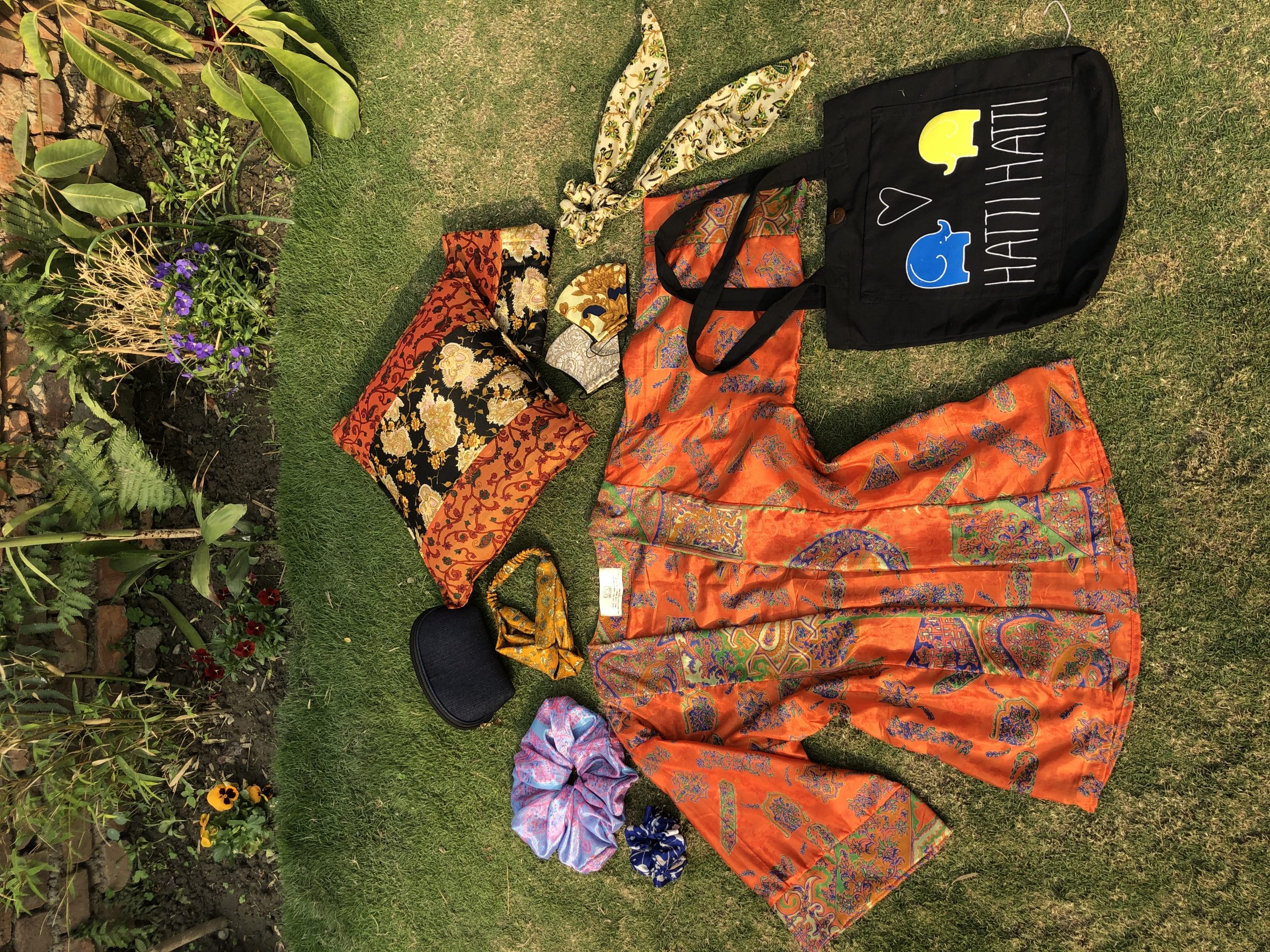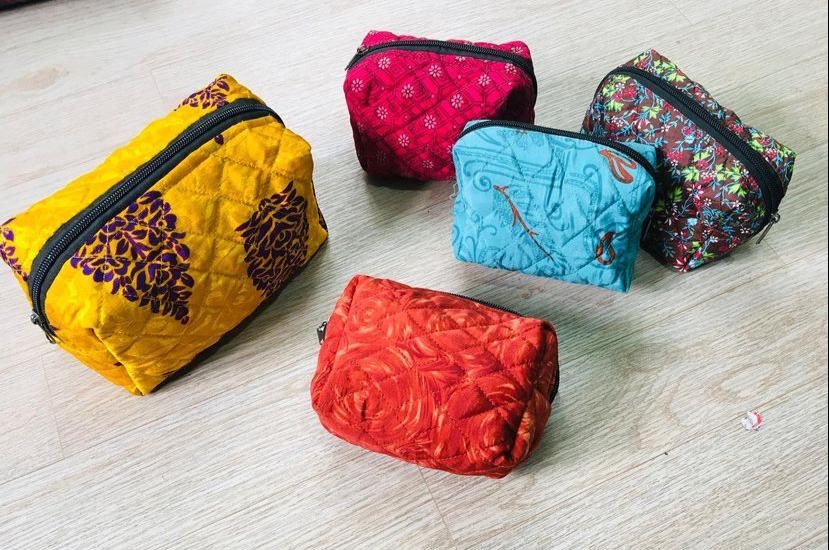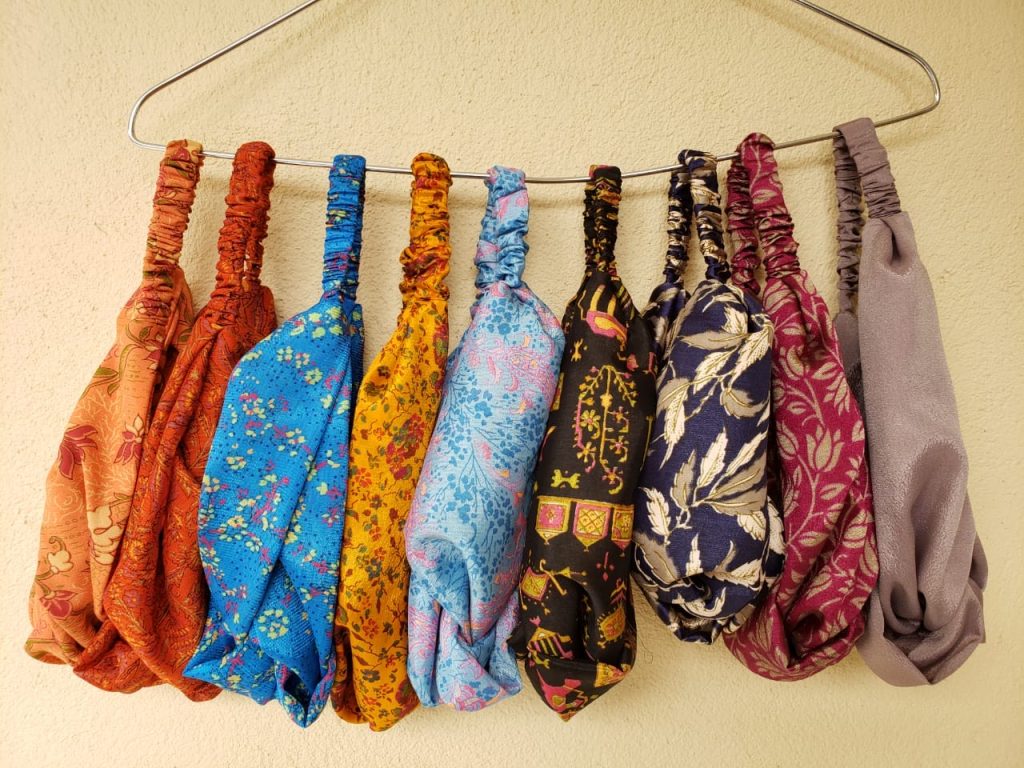Have you ever checked out your mother’s or grandmothers’ cupboard? If you have, it is no secret that it is a treasure chest of saris which they have used either once or twice. Many such saris are hoarded in numerous Nepali households.
They neither want to discard those saris as they have their beautiful memories and emotions attached to them nor will they wear them because they might be outdated fashion. Sadly, such saris eventually end up in the landfill, adding to the textile waste.
For decades, it has remained a problem, seen or unseen. However, a team of seven youth and a Swedish couple have seen an opportunity in it.
The people desperately searching for an idea to support women from marginalised communities and make them socially and economically independent saw such old, vintage and unused saris as resources and started a company ‘HattiHatti’ in 2014, which upcycles such saris into beautiful products by educating and training such women.
Back in 2014
Priya Sigdel, Bhushan Pyakurel, Abita Karki, Sulav Baral, Bijesh Ranjit, Dharma Raj Giri, and Rumi Rajbhandari are seven people behind this organisation.
Sajna Jirel, the executive director at HattiHatti Nepal shares, “It all started in 2014. There were no plans. What the team had was the common goal and interest to do something for women from marginalised communities, however, had no idea how to do so.”

While exploring ways, they initially began selling Swedish chocolate balls in a farmers’ market to generate funds to support a woman through sustainable sewing skills and non-formal education. However, this was not enough for their need to support more women. Thus, they began searching many other ways, according to Jirel.
“After that, they again started searching for raw materials and then clicked the idea to upcycle old saris. Then, they began collecting such old saris and upcycling them,” narrates Jirel, who joined the HattiHatti team in 2017, when the organisation was formalised.
Hurdles on the way
Moving from one idea to another was not easy though. Jirel explains, “Foremost, collecting old saris from the donation stood as a major challenge. Also, there were only a few local buyers as many hesitated to buy clothes made from worn saris. Likewise, we also had had a very little variety to offer.”
Initially, HattiHatti only made three products: bow ties, kimonos, and tote bags. However, the organisation has a variety of fashionable products now, including cushions, jeans pouches, headbands, scrunchies, scarves and a lot more, costing from Rs 75 to Rs 3,000 to offer.
Jirel views that the initiative has overcome its challenges as of now because many Nepali people have become so conscious of sustainability. “They know who makes the product they are buying, and where the money goes (for a social cause).”
Also, promotions from different media have helped the people who want to donate saris know about HattiHatti and its works, as per Jirel. HattiHatti also initially showcases its presence and products via different group markets and social media platforms.
Upcycling old saris
The process of upcycling second-hand saris into fashionable clothes and accessories starts at the HattiHatti office. Jirel describes, “All the collected saris are washed and dried. Then, they are ironed and taken to the sewing women to redesign them into different products.”
According to Jirel, every HattiHatti product has a label along with a particular number of the tailor who makes it and the buyer can know about the tailor via the website. She also stresses that every bit of the donated saris is up-cycled at HattiHatti as per the condition of the sari.

In order to buy their products, one can visit its office at Ekantakuna Road, Jawalakhel or buy via stores like the Local Project Nepal (Jhamsikhel and LeSherpa) and Timro Concept store (Bakhundole) or via HattiHatti’s Instagram and Facebook pages.
“Though we are in a tough state as of now due to the pandemic, we are planning to reach more women and take this to all seven provinces and support and empower women from marginalised communities to begin entrepreneurship in the near future.”
The story of the name
The name ‘HattiHatti’ translates to the word meaning ‘elephant’ in Nepali, which is often seen as a creature with a big heart. It is said that elephants live in a herd, always supporting each other. “Here, in HattiHatti also, we believe in striving on the similar qualities of supporting each other to grow together,” says Jirel.
From the funds collected from donations and sales of products, HattiHatti works to empower women to entrepreneurship. Jirel explains, “We do so in three phases: first by providing them non-formal education, then by making them learn and practise sewing skills and by guiding them to start their own company.”
Started with one woman, currently, HattiHatti has eight beneficiary tailors. Every year, the organisation keeps enrolling some more women and support the other trained women, who want to leave HattiHatti and start their own shop, according to Jirel.
So far, four women trained from HattiHatti have been doing something on their own; out of them, two have opened their own shops.
ALSO READ:





























